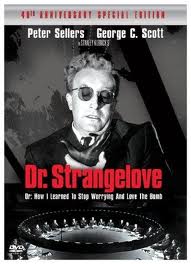The Blog includes:
1. Movie Background
2. Director: Lynee Littma / her previous “20 years after”
3. Script
4. Nuclear Thoghts Reviews
5. Music Sountrack
6. Cinematography
7. Fall-Out Shelter
7. Afterthoughts of each memeber
The Blog includes:
1. Movie Background
2. Director: Lynee Littma / her previous “20 years after”
3. Script
4. Nuclear Thoghts Reviews
5. Music Sountrack
6. Cinematography
7. Fall-Out Shelter
7. Afterthoughts of each memeber
Cinemotography
Director of Photography: Steven Poster
Technique: Concentrated on the emotional impact and personal connection. direct view of specific places and people in distinct social settings allows for that more emotional connection. Utilizing distinct contrast of light and dark increases the sensitivity of the unconscious meanings of the moment to be revealed, beyond the surface impressions. The intention is to invite the viewer to feel for humanity. Steven Poster hopes to convey his love and respect for his subjects, without denying their pain. And he feels in this work, grounded in temporal reality, a sense of poetry and timelessness.
Citation:
unknown. (n.d.). Statement. Retrieved from http://www.stevenposter.com/
Examples from the Film
-Elyse
Set in the small town Hamlin,California, the Wetherly family and their everyday concerns open the story. While the children watch afternoon cartoons, the T.V. signal turns to static. It is then replaced by breaking news, sending out the broadcast of a nuclear attack on New York and the East Coast. Suddenly sirens alarm and a blinding flash engulfs the families’ home. The nuclear holocaust cuts Hamlin off from the outside world. Panicked, the community gathers at the local church. Hamlin appears to have been spared. The reason behind the attack or who started it remains unknown. Life goes on for a while; the town tries to cope and work together. But before long, the cemetery fills up. The oldest son asks his mother if they should leave. When she asks him what he thinks, he tells her they should stay. The focus remains on the individuals and the way in which they adjust to the inevitable.
-Elyse
Awards:
1983 Christopher Award – Feature Film
Nominations:
1984
Jane Alexander : Best Actress in a Leading role (Oscar) – Academy Award
Lynn Littman : Grand Prize – Avoriaz Fantastic Film Festival
Jane Alexander: Best Performance by an Actress in a Motion Picture (Golden Globe) – Golden Globes
1985
Rossie Harris : Best Young Actor in a Motion Picture – Young Artist Awards
Roxana Zal : Best Young Actress in a Motion Picture – Young Artist Awards
“Testament features not a single scene of destruction, but builds psychological and emotional horror few films sustain at this level. Schindler’s List did. So does Testament, a gut wrenching tale that imagines a domestic holocaust with similar power and meditation.” – Joe Valdez
Credits:
Valdez, J. (2008). Testament (1983). Retrieved from http://thisdistractedglobe.com/2008/03/28/testament-1983-2/
Awards for Testament. Retrieved from http://www.imdb.com/title/tt0086429/awards
Related works
General
Comments on Shapiro’s criticisms
Documentaries – Influence on viewers and cast members
Take home message
Cold War Movie
There are several types of films for illustrating the Cold War period:
1. Dr. Strangelove ( 1964) as acerbic satire: an absolutely insane scientist starts to process nuclear weapon war

2. On theBeach ( 1959 ), it’s a film about the the conflict has devastated the northern hemishpere, polluting the atmosphere with nuclear fallout and killing all life. While the bombs were confined to the northern hemisphere, air currents are slowly carrying the fallout south. The only areas still habitable are in the far southern hemisphere, like Austrialia as the last virgin land. This film is also mentioned in Shapiro’s reading for the comparison of Testament.
As for Testament, it’s illustrated the” Cold War” in a very quite and senstive way.
It’s directed in such a ” normal” way, during the Cold War Era , things like this could literally happen. Women also play an important role in this type of the film, Women are always the ones who wait for their husband to come back after the war ends. It’s a desperate film, hoping for the best would come but in the film the husband didn’t come back.
It’s more of an emotional wake-up because it’s so real, I believe it’s also happened to many widows during the wars.
Unlike other American films, it does not have a happy ending, it’s rather “realistic” in a way and sad. In my opinion, it’s illustrated the war movie in a more suitable way, women have to be strong to take care of the children and learn to be independent.
Air raid precautions
After Pearl Harbor was bombed, Americans became fearful of a possible attack on the United States mainland. Civilians volunteered to coordinate civil defense and home safety efforts in their local areas. Spotters studied aircraft silhouettes, blackout accessories were made available and air raid drills were practiced on a regular basis. This 1940’s WPA poster reminded citizens of the proper procedures to be followed during air raid drills.